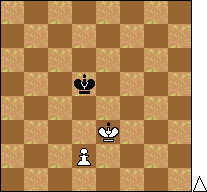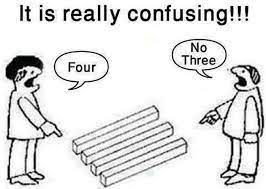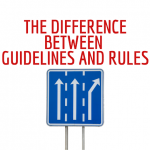
By CEO National Master Evan Rabin

Too many chess players focus too much on the openings and not enough on the endgame. While you can get an advantage in the opening, outplay your opponent in the middlegame and earn a winning position, none of that will matter if you cann’t finish off your opponent in the endgame. Bobby Fischer’s second Bill Lombardy once taught me how it is important to focus on transitions from the opening to middlegame and the middlegame to endgame. 
As one enters an endgame and has a worse position, he needs to change his mindset from trying to win the game to trying to hold his own for a draw.

It is now time to make some generalizations and categorize endgames and expected outcomes by piece type. In each scenario, let’s visualize that white has four pawns and black has three. Of course one cannot know expected outcome based on knowing 3-4 ratio but most often here the expected results:
- King and Pawn Endgame: 4 pawns wins
- King, Knight and Pawn Endgame: 4 pawns wins
- King, Bishop and Pawn Endgame: depends (opposite colored- draw, same-colored bishop- 4 pawns wins)
- King, Rook and Pawn Endgame: good drawing chances for black (due to perpetual check chances)
- King, Queen and Pawn Endgame: good drawing chances for black (due to perpetual check chances)
This classification of endgames is a guideline; certainly not a rule.
One needs to look at the actual position to see if the player with one less pawn has good drawing chances or not. However, this classification could be useful when trying to determine what endgames to try and transition into. For instance, most often a player down a pawn should not trade rooks when in a rook and pawn endgame.


Thank you for publishing good content
Explore, conquer, repeat.
Unleash your inner gambler and embark on a thrilling adventure filled with endless possibilities and big wins.
Play and win real money on your favorite games!
Build alliances and dominate the leaderboard!
I admire your creativity in problem-solving. You bring fresh ideas to the table that inspire us all. Check my page for other related articles
I admire your creativity in problem-solving. You bring fresh ideas to the table that inspire us all. Check my page for other related articles
The animations are smooth, and every environment feels lively and interactive. Whether you want to spend your time exploring the busy streets of the city, relaxing at the beach, running your own shop, or decorating a fancy apartment, Avatar World Mod APK gives you the freedom to do it all. You can experiment with new looks for your characters, try out different interior designs, or create little stories about their daily lives.
Clients benefit from their strategic approach and consistent delivery of high-quality, trustworthy services.구글찌라시 Choosing this expert means investing in a service that prioritizes accuracy, innovation, and client trust above all.
Consistently delivering top-tier quality, this provider sets the standard for reliability and expert craftsmanship.강남쩜오 Every project benefits from their meticulous approach and unwavering commitment to client satisfaction.
Many top moving companies in Malmö also offer eco-friendly moving methods. Malmö is a city known for caring about the environment, and some moving services use fuel-efficient trucks with lowered emissions to support greener relocations. A few companies even encourage recycling left-over boxes after the move so customers don’t throw them out unnecessarily.
If you want to customize your own superhero, then you are at the right place. You will be able to use the unlocked premium features from the very beginning of the game in the latest version of the game. You can customize your own superhero character. This will be very satisfying and interesting, making your own superhero.
This blog was extremely helpful. I really appreciate your kindness in sharing this with me and everyone else!
Financial solution services play a crucial role in helping individuals and businesses manage their financial needs effectively. These services include loan assistance, financial planning, credit support, and investment guidance. By offering customized solutions, companies ensure clients receive the right support at the right time. With simplified processes and expert advice, financial solution services make borrowing, budgeting, and planning easier. They aim to improve financial stability and empower people to achieve their personal or professional goals confidently.
Endgames really don’t get the attention they deserve, and posts like this are a great reminder of why they matter. Understanding which pieces offer drawing chances and which positions collapse quickly can completely change how you approach transitions in real games. Even a small edge becomes useless if you can’t convert it in the final phase. I like how you broke down each type simply—it makes the ideas much easier to visualize during study sessions. A solid endgame foundation truly strengthens every other part of your play.
thanks for sharing
Endgame study really demands sustained mental effort and patience, especially when you’re calculating long variations and transitions, so taking short creative breaks actually helps many players avoid burnout; some people reset their focus by switching to low-pressure creative games like Minecraft, where there’s still strategy and planning but without competitive stress, and casual Minecraft discussion and versions often come up around places like [Link deleted]
— a mental reset like that can make it easier to come back to serious chess study with clarity.
Endgame work in chess really pushes the brain because every small inaccuracy can change the result, and studying those positions for long stretches can quietly drain mental energy; that’s why many players balance serious analysis with something more open-ended and creative, like spending time in sandbox games such as Minecraft, where you still think and plan but without competitive pressure, letting the mind decompress before returning to focused chess study, and casual Minecraft discussions often surface around places like minecrftdescargar mx
as part of that broader gaming space.
Your posts always bring so much value!!!
Your post is amazing, it brings so much value.